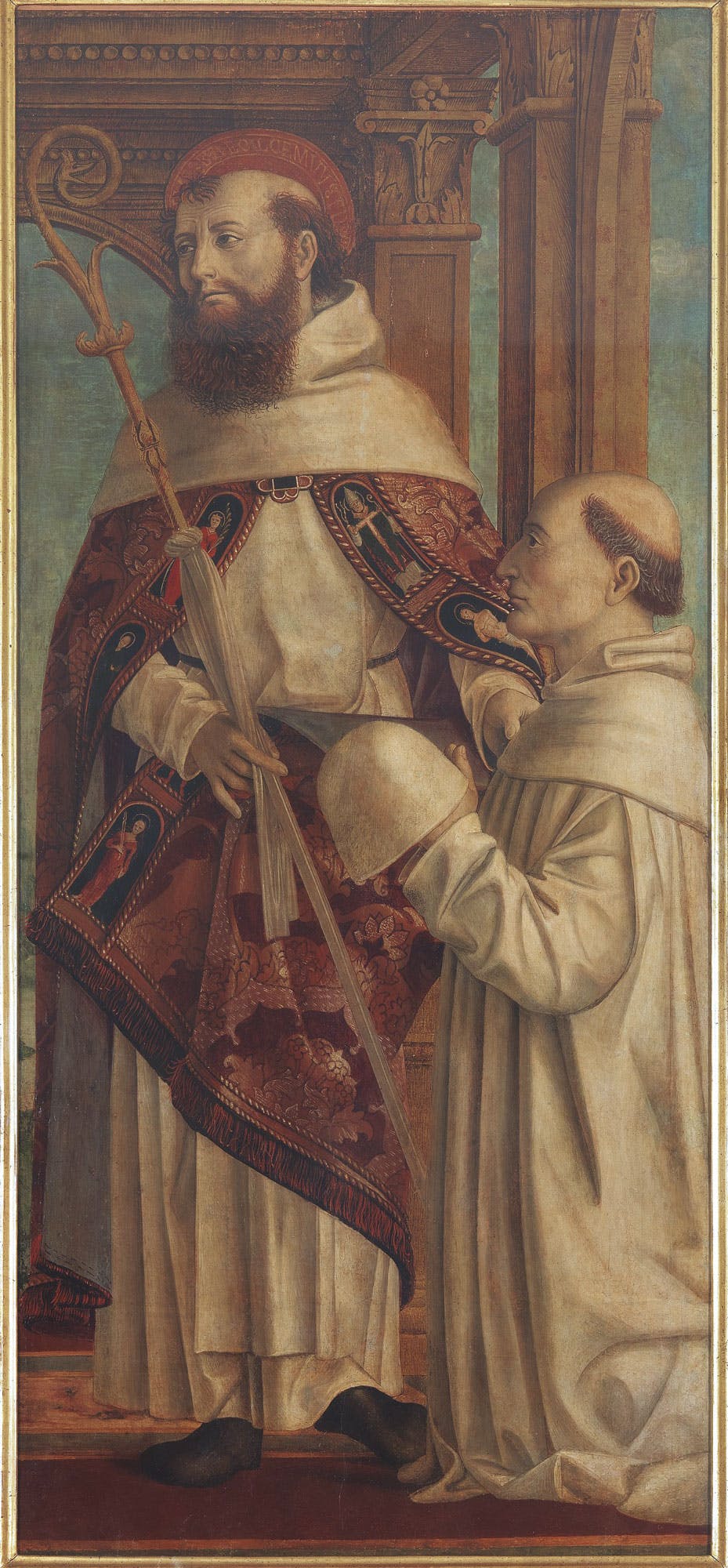Holy Monk and Donor
Bernardo Zenale (Treviglio, Bergamo documented from 1477 - Milan 1526)
The holy monk’s identity is not known. He wears a valuable cape over his white tunic and scapular and holds the crosier, both of which were privileges enjoyed by abbots and bishops. Based on the colour of his robes, the monk is likely to be either the founder of the Order of Cistercians, Bernard of Clairvaux (1090-1153), or Baudolino of Alexandria (eighteenth century), a saint much venerated by the Humiliati and therefore sometimes depicted wearing the order's habit, although he was never a member. Next to him kneels a monk belonging to the same order, who holds his cap in his hands as a sign of respect. Both men are looking to the left. The painting originally belonged to an altarpiece featuring St. Michael the Archangel, (also in the Uffizi, Contini Bonacossi Inv. No. 9), and the Madonna enthroned among saints, which is now in the Helen Foresman Spencer Museum of Art in Lawrence (USA). The three panels share a similar architectural framework, a sort of loggia under which the sacred figures are placed.
The altarpiece, perhaps intended for the church of a Cistercian settlement or the Humiliati Friars, is the work of an important Renaissance painter from Lombardy: Bernardo Zenale. The painting contains certain elements that characterised Lombard painting in the late fifteenth century, namely a strictly perspective layout, solemn classical architecture, sculptural figures, and a realistic rendering of features, expressions, and objects.
The two panels are currently on display in the Uffizi and belonged to Gustavo Frizzoni's collection in Bergamo before being purchased by Alessandro Contini Bonacossi in the 1930s. The panel featuring an enthroned Madonna – which is now on display in the United States and also belongs to the Contini Bonacossi Collection – was sold by an art dealer to the American magnate Samuel H. Kress in around 1935.
Saint Michael the Archangel
Bernardo Zenale (Treviglio, Bergamo documented from 1477 - Milan 1526)
